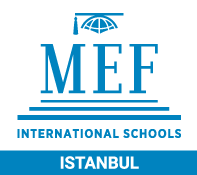Exposing children to languages other than their mother tongue provides insight into and an appreciation of other cultures, as well as an awareness of other perspectives.
The IB PYP (International Baccalaureate Primary Years Programme) seeks to enable children to function as international citizens which, in part, entails the ability to function capably and comfortably within and between cultures. Developing the capacity to speak more than one language is an integral part of this preparation and, as a result, the provision of additional language instruction has been made a mandatory requirement of MEF IS.
In making additional language learning a mandatory component of the programme, the IB PYP recognizes the need to prepare children for the world in which they will live and work, and to participate in a highly globalized economy. Here, at MEF IS, Modern Foreign Languages (MFL) are taught to students from Grades Preschool to Grade 5, who have achieved a certain level of English literacy. Students choose to learn French or Spanish. By the end of primary school, our students have set the stage for further development with the eventual goal being to use of language for communication.
Three strands are designed to interact with each other, working together to support the overall development of each student. These strands are detailed below:
- Speaking and Listening
- Reading and Viewing
- Writing
Whilst these strands can be viewed independently, the approach to language teaching is holistic and within context. All aspects of language are interactive and interrelated and are the basis of learning in all areas of the curriculum.
The ability to communicate in more than one language facilitates individuals’ movement beyond their first language and home culture, increasing their awareness of the world and ultimately enabling them to participate more fully as international citizens.
The introduction of an additional language to younger learners encourages the development of a well-informed, positive attitude to the languages and ways of life of our neighbours, far and near, and the development of an international, as well as a national and local sense of identity.
(Johnstone,1994)



